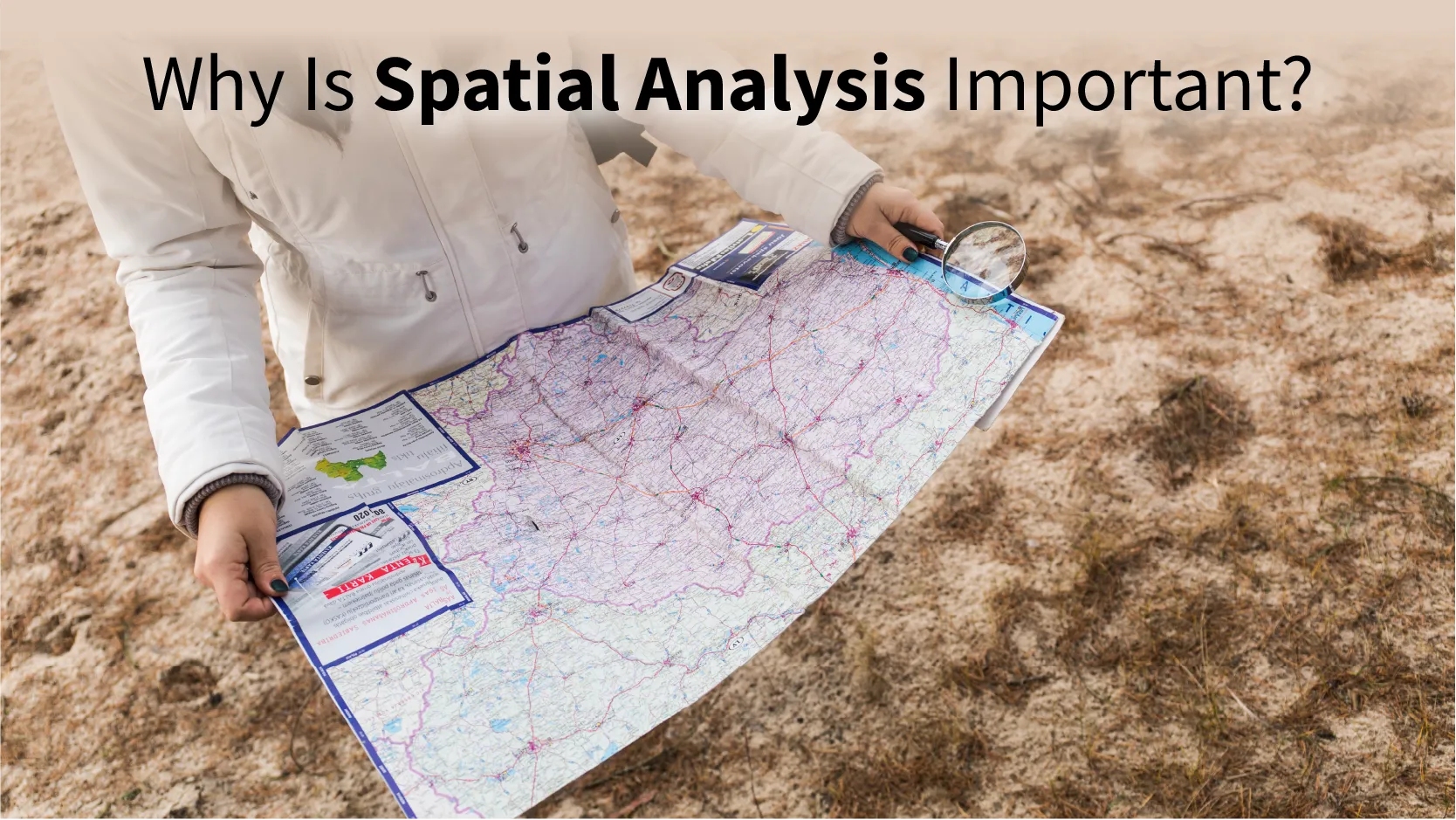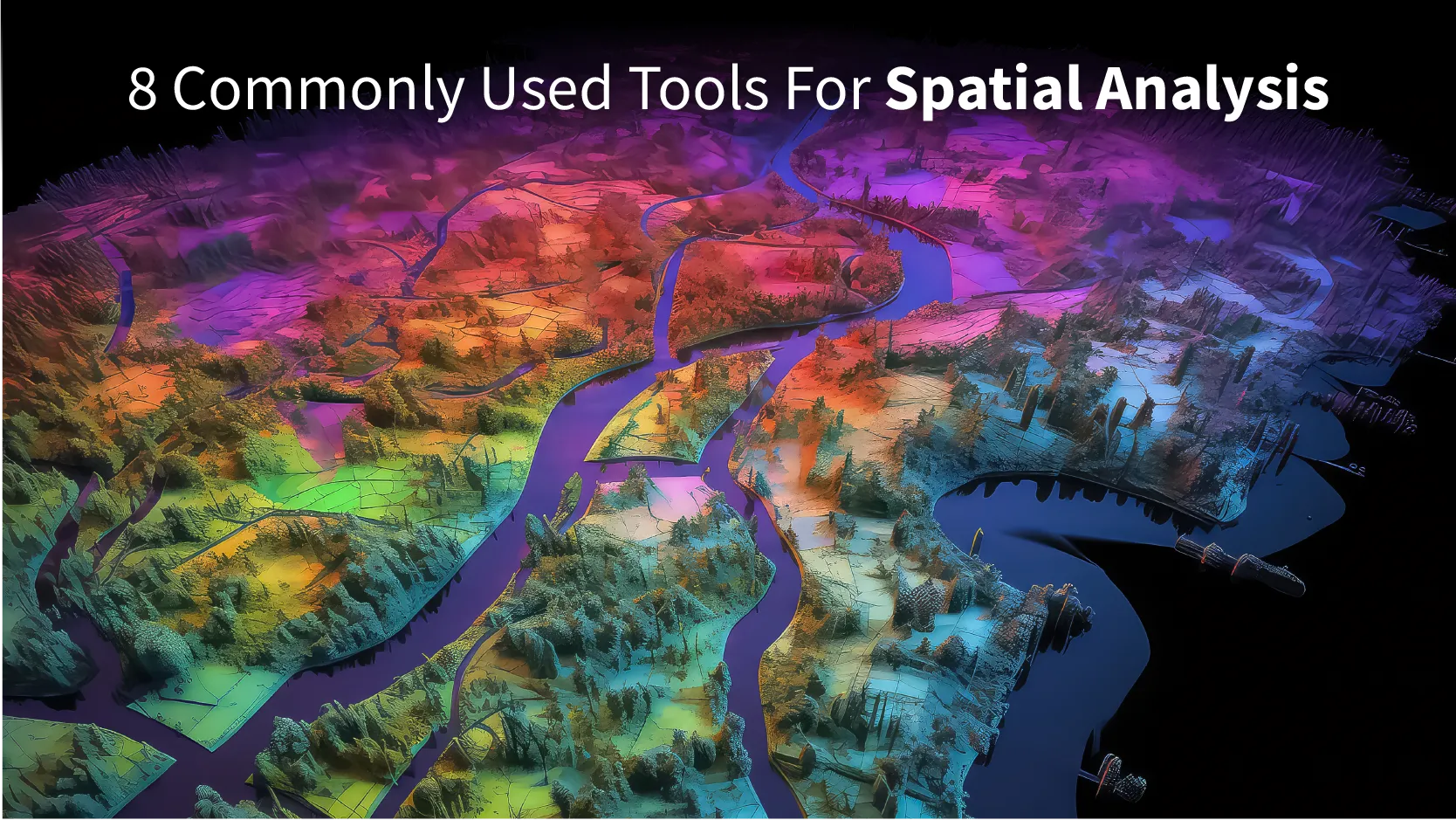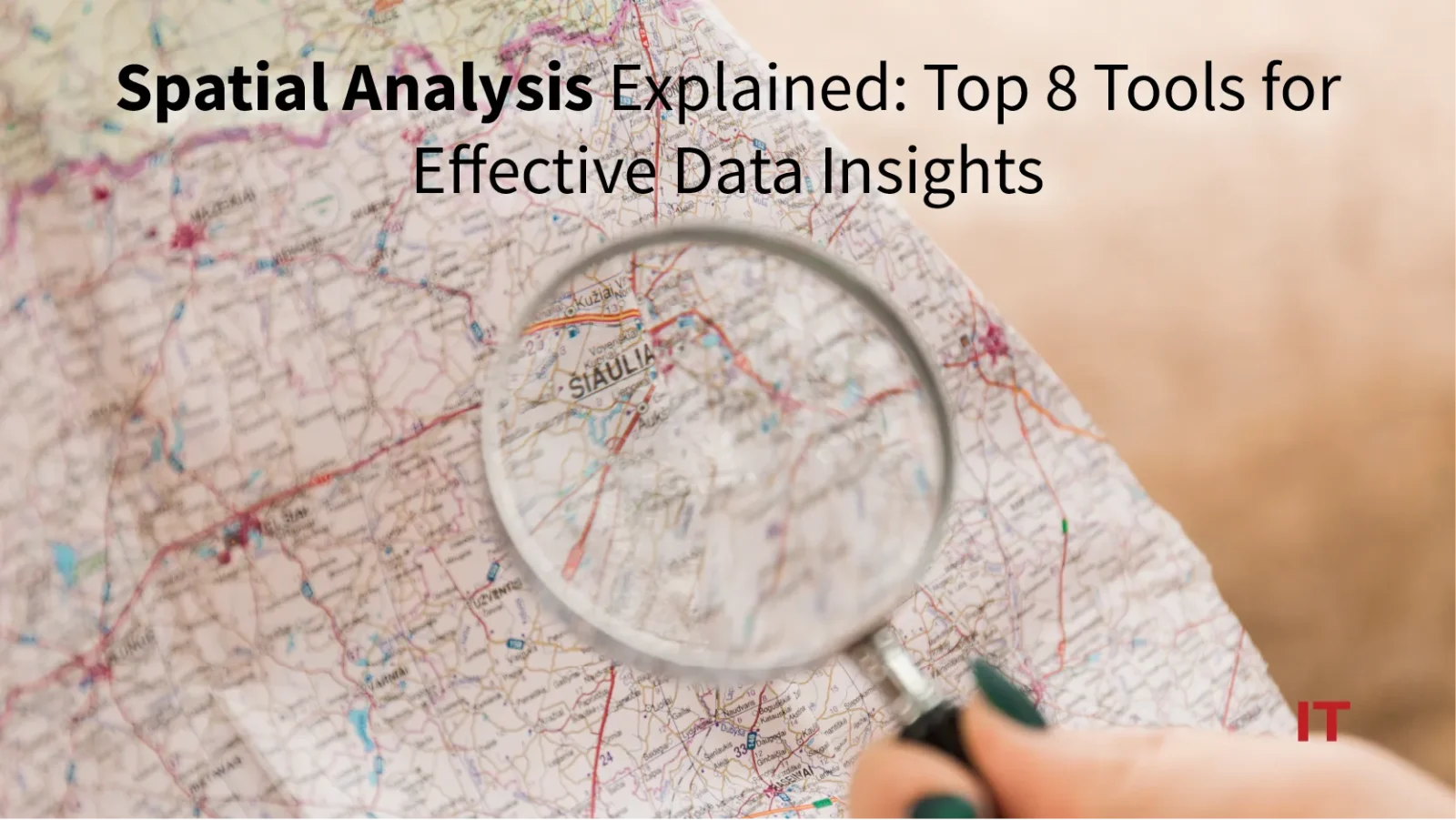Spatial analysis is an essential tool for understanding and utilizing geographic data to make informed decisions. It involves the examination, evaluation, assessment, and modeling of spatial data features such as locations, patterns, and relationships. Using these data lets you gain new perspectives, find solutions to complex problems, extract relevant information, and more. Let’s learn more about it.
What is Spatial Analysis?
Spatial analysis is the process of examining, evaluating, and modeling spatial data features, including locations, qualities, patterns, and relationships. It entails studying an entity’s geometric or geographical characteristics. Geographic information systems (GIS) rely heavily on spatial analysis as a key tool for answering queries, gaining new perspectives, and extracting relevant information from spatial data.
Why Is Spatial Analysis Important?
 Spatial data analysis is crucial as it enables decision-makers to leverage consolidated spatial data from various sources to address specific needs effectively. For instance, in urban traffic management, spatial data analysis helps authorities identify congestion points and optimize traffic flow, leading to the development of resilient cities. Additionally, spatial arrangement is vital in healthcare for tracking disease progression geographically, allowing for timely interventions and strategic vaccination planning.
Spatial data analysis is crucial as it enables decision-makers to leverage consolidated spatial data from various sources to address specific needs effectively. For instance, in urban traffic management, spatial data analysis helps authorities identify congestion points and optimize traffic flow, leading to the development of resilient cities. Additionally, spatial arrangement is vital in healthcare for tracking disease progression geographically, allowing for timely interventions and strategic vaccination planning.
In the modern world, spatial arrangement underpins many everyday activities, from booking cabs and tracking deliveries to navigating with GPS. The integration of AI and ML has made it easier to filter vast amounts of spatial data, transforming it into actionable insights. This accessibility not only boosts business efficiency by optimizing operations but also plays a critical role in saving lives by enhancing emergency responses and healthcare management. The omnipresence of spatial in our daily lives underscores its importance in fostering both economic growth and public safety.
Also Read: 9 Top Data Science Tools for Beginners in 2024
Different Types of Spatial Analysis
- Spatial query and chat: A spatial query is a request for specific data or information based on spatial criteria. You can ask questions about spatial relationships and receive answers. It further examines and analyzes spatial data patterns, relationships, and trends.
- Data measurement: Spatial measurement is about calculating and quantifying spatial attributes and features. This includes calculating distances, areas, lengths, densities, and other quantitative measurements of spatial features.
- Transformation: Spatial transformation is the conversion of data from one spatial representation to another. This involves coordinating transformations, projection conversions, and data format conversions to make the analysis compatible and consistent.
- Description: In spatial description, spatial patterns and properties of features are summarized and described. This includes the creation of statistical summaries, thematic maps, and the visualization of spatial distributions.
- Optimization: Spatial optimization is about finding the best or optimal solutions to spatial problems. It involves optimizing spatial configurations, resource allocations, route planning, and other spatial decision-making processes to achieve the desired results.
- Validation: It also ensures the accuracy, reliability, and validity of spatial data and analysis results. It involves error detection, error correction, and quality assurance to ensure that the results of the analysis are correct.
8 Commonly Used Tools For Spatial Analysis
 Here are some common tools and techniques:
Here are some common tools and techniques:
- QGIS: This is a free and open-source GIS software. It provides a variety of tools for analysis purposes. Spatial query, geoprocessing, interpolation, network analysis, and more.
- R: R is a programming language and software environment for statistical calculations and graphics. It has packages and libraries for analysis, such as the “Spatial” package, which contains functions for the processing, analysis, and visualization of spatial data.
- Python: Python is a versatile programming language that is widely used in spatial analytics. Libraries such as GeoPandas, Shapely, and PySAL offer functions for processing spatial data, geometric operations, and spatial analyses.
- GRASS GIS: GRASS GIS is a free and open-source software package for spatial data analysis, remote sensing, and visualization. It has a variety of tools for spatial analysis, including raster and vector processing, image classification, and spatial interpolation.
- Spatial statistics tools: Various statistical software packages such as R, SAS, and SPSS have spatial statistics tools for spatial patterns, clustering, spatial autocorrelation, and regression analysis.
- Remote sensing software: Remote sensing software such as ENVI and Erdas Imagine have tools for analyzing and processing satellite or aerial images. These tools can be used to classify images, detect changes, and analyze vegetation.
- Geospatial data mining: Geospatial data mining techniques such as clustering, classification, and association rule mining can be applied to spatial data management to identify patterns, trends, and relationships.
Keep in mind that tools and techniques vary depending on the requirements, data, and user. Software and programming languages have different capabilities, so choose what is appropriate for your analysis.
Getting Started with Spatial Analysis
The potential for innovation and improvement in the subject of spatial analysis is enormous, as we can see when we look to the future of this study. The increasing availability of spatial data, advancements in technology, and the growing demand for data-driven insights are driving the evolution of spatial analytics. You can also reach out to companies like Hexagon, Oracle, Alteryx Platform, etc for turning raw data into powerful geospatial insights.
An exciting aspect of the future of spatial analytics lies in the integration of emerging technologies. The combination of spatial analysis with artificial intelligence (AI) and machine learning (ML) holds great promise. AI and ML algorithms can enhance the capabilities of analysis by automating processes, identifying complex patterns, and making accurate predictions. This integration will enable us to extract deeper insights and unlock hidden knowledge from spatial data.

































